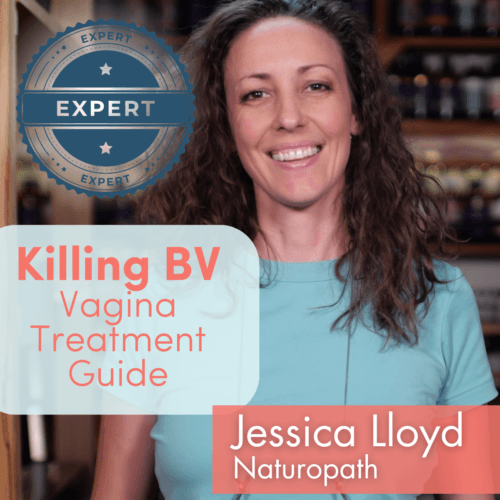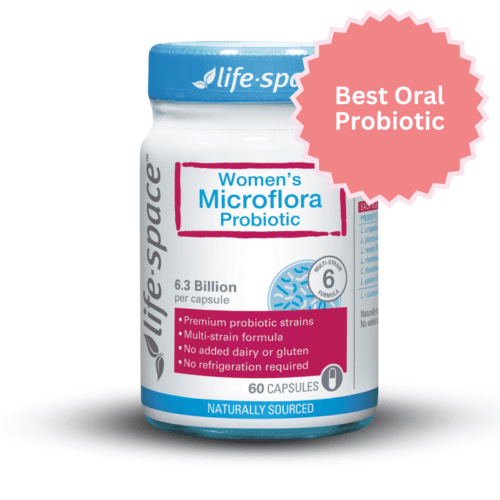Girls can get vaginal irritation and infection resulting in discharge. This discharge can range from light and thin to yellow or green and thick, and can be startling, as it is not necessarily the kind you would see in an adult woman.
Infections and inflammation can occur because the protection of pubic hair and larger labia don’t exist. Additionally, there is a lack of protective bacteria (that post-pubertal girls and adult women have, as the bacteria feed on the vaginal end result of oestrogen, glycogen). Thin mucosa and less acidic vaginal pH can contribute to irritation.
Causes of vulvovaginitis in girls
- A foreign object (like toilet paper) is lodged inside the vagina and has caused an infection such as aerobic vaginitis (AV). This is despite your daughter having an intact hymen.
- She has gotten an irritant in or around her delicate vulva and vagina causing vulvovaginitis – think soap, shampoo, bubble bath, printed/dyed toilet paper, or something else.
- She hasn’t quite figured out the concept of front-to-back wiping, and has smeared faeces in and around her vagina, causing infection.
- She has a skin condition – eczema, psoriasis, lichen sclerosus, labial adhesions.
- Rarely, the cause could be a tumour or an anatomical anomaly.
Symptoms of vaginitis in children
- Itchy vagina or vulva
- Soreness
- Rubbing, scratching or complaining
- Walking in an unusual way
- Vulva visibly red and hot
- Vulva may be swollen
- Green, white, yellow, brown, or bloody discharge in underwear
- Discharge is likely to smell
- Painful urination, due to urine contacting inflamed tissue
- Dry, white itchy patches on the vulva
Discharge types in children
Bloody vaginal discharge/bleeding
- Group A Strep
- Shigella bacterial infection
- Foreign body
- Trauma
- Scratching
- Genital warts (condyloma)
Green vaginal discharge
- Staphylococcus bacterial infection
- Streptococcus bacterial infection
- Haemophilus bacteria (Haemophilus influenzae)
- Gonorrhoea (Neisseria gonorrhoeae) infection
- Foreign body
Vaginal bleeding (outside of first 10 days after birth) may mean:
- A foreign object
- Severe vulvovaginitis
- Trauma (straddle injury, sexual abuse)
- Threadworm infestation
- The first menstrual period – premature menstruation is under eight years of age, and is associated with several conditions
- Blood in the urine (dysuria) – bleeding from bladder, urethra or kidney (not vagina)
- Urethral prolapse or caruncle
What to do about vulvovaginitis
Establish the cause of vulvovaginal symptoms
First, try to establish the cause so you can eliminate it. Keep in mind that if it is just vulvar inflammation (the outside flesh – labia, clitoris), she won’t have discharge: discharge is the result of something infected further up inside the vagina, causing extra production of mucous.
Interestingly, most vaginal irritations in children don’t have an identifiable cause. There is obviously a reason, however, and every effort should be made to find out what that is without repeated antibiotic use, where possible.
Keep a record of the symptoms
Date, onset, duration, colour, odour, any associated symptoms (fever, itching, other pains, bleeding), hygiene practices and items used, any signs of puberty, treatments tried. Keep this record, and add to it with recurrences later if they come up. It helps to have good records.
Remove vulval irritants like soap and bubble bath
Avoid any irritants such as perfumed soaps. They will only cause her pain when the soap comes into contact with her vulva, and rinsing with warm water or a soap-free cleanser is sufficient.
Bubble bath, toilet paper, wipes, creams, ointments – all can cause irritation, so leave it alone and see if it clears up, then you’ll know your culprit.
Causes of vulvovaginal infections in children
Infection – staph, strep, yeast, pinworm, threadworm, Gardnerella
These infections will all cause some discharge if inside of your daughter’s vagina, as well as probably some itching of the vulva, vagina, and perineum.
Your daughter will need to be tested for by your GP, by taking swabs of the introitus (not the vagina – only the entrance) with a more sensitive vaginal microbiome test for some bacteria possibly required. A pH test may also be conducted.
Pinworms will cause greater itching at night as their telltale sign; staph and strep cause reddening of the skin on the vulva.
Yeast infections are uncommon in girls over two years old up until puberty. Infections with staph, strep and haemophilus cause red, beefy appearance of labia. Shigella causes bloody discharge and foul odour.
- Group A Strep
- Shigella
- Genital warts (condyloma, HPV)
- Staphylococcus bacteria (MRSA)
- Streptococcus bacteria
- Haemophilus bacteria (Haemophilus influenzae)
- Gonococcus (gonorrhoea)
- Gardnerella vaginalis (bacterial vaginosis)
- Mycoplasma bacteria
Eczema, skin conditions of the vulva
There are several skin conditions that can affect the vulva, including lichenoid conditions, eczema, psoriasis, and labial adhesions, so if the child is showing signs of skin conditions on other parts of her body, it may be suspected if all other causes have been ruled out.
Labial adhesions (labial agglutination)
For reasons we don’t quite know, sometimes the edges of the labia adhere to other surrounding tissue. This may be due to thin vaginal mucosa (which is normal) and minor irritations by soaps or clothing. Labial adhesions typically resolve in late childhood, and so long as the child can urinate without issue, no treatment is required.
Labial adhesions can become itchy or painful, in which case see labial adhesions treatments for more information. If it can be avoided, no treatment seems to be the best treatment.
Lichen sclerosus
Lichenoid conditions can look like vulvovaginitis in some girls, and can be asymptomatic. It looks like pale dry patches on the labia and possibly the perineum. It is usually itchy and quite uncomfortable, with scratching triggering the itch-scratch-itch cycle. The scratching can cause more inflammation.
Lichen sclerosus is thought to be an autoimmune condition, but no real treatment or cure has been found. It will remain a possibility for all of life, however many instances resolve themselves spontaneously without further attention.
Barrier ointments are usually prescribed, along with 1 per cent hydrocortisone creams, but be cautious, and opt for treating the immune system of the child, rather than relying constantly on pharmaceutical ointments that can damage skin over the long term.
Lichenoid conditions can really destroy a vulva, so early diagnosis and treatment is critical.
Foreign objects
Foreign objects inside the vagina often result in smelly or dark-coloured discharge, plus pain and bleeding. Discharge won’t respond to microbial treatments. Common foreign bodies are toilet paper, safety pins and toys.
Take your child to the doctor/emergency room to be examined, and if necessary, have her sedated or anaesthetised so as to avoid discomfort or pain while hunting down the cause. Do not try to get the foreign object out yourself.
Preferably find a skilled paediatrician who understands how to approach a young girl who possibly has a foreign object inside of her vagina, who can figure out what the likely cause of the problem is before fishing around in your daughter’s vagina for toilet paper or small toys.
Damage, trauma, accidents
Girls hurt themselves all the time while playing, with several types of injury common.
- Straddle injury – from playground or bicycle bars, hitting a prominent surface like the labia.
- Penetrative injury – from something penetrating the vagina, either shallow or deeply, like a sharp stick or pointed object. Hymenal injury can occur.
- Non Penetrative injury – this could include fractures and other damage
- Multiple trauma injury – any or all of the above
- Urethral injury – only affects the urethra or urethral meatus
- Insufflation injury – from blowing air or other substances into the vagina
Read more about vulvovaginal injuries
Sexual abuse and the ‘diagnosis of exclusion’
A doctor will need to eliminate other causes of the infection, including sexually transmitted infections passed on during sexual abuse. A wet mount may be taken to establish that it is not trich or cervicitis caused by an STI. Although this is frightening, it is the usual course of action to protect your child.
Keep in mind that a foreign object can be indicative of over-sexualised behaviour in children, and may be an indicator of inappropriate sexual contact of some kind, either with another child or with an adult.
Wipes are not (always) your friend
If she is still in diapers/nappies, be diligent with your cleaning, and avoid using baby or other wipes, besides water-only wipes or a soft wash cloth.
Regular baby wipes can strip the skin of its protective barrier, and leave a chemical film on skin, leaving your baby’s skin raw and irritated (despite their promises). If she is older and toilet trained, simple cotton underwear or no underwear is suitable.
Treatment for vulvovaginal conditions
There are some options for treating children’s vulvas and vaginas but these will obviously depend on the cause of the vulvovaginitis.
Infections will likely be treated with antibiotics or antifungals. If this treatment is undertaken and the problems persist, it may be a foreign object, poor wiping habits or another factor that continues.
Once the doctor has tried to figure out the problem and devised a treatment strategy, your child will usually be seen again in two weeks to ensure the resolution of the problem. If the problem is still not solved, greater measures may be taken.
Tips for caring for your daughter’s vagina
- Your daughter may not be able to tell you what’s wrong – don’t push her, just try asking a different question, or just accept that she doesn’t know what’s wrong.
- Don’t jump to conclusions – stick to the facts and write a list of possibilities so that you can start to provide facts for the doctor and you to work on eliminating. Be a critical thinker.
- A simple swab can quickly at least tell you what the infection is – if there is one. Antibiotics should eliminate the infection in the short term and help alleviate discomfort.
- If your daughter takes antibiotics, make sure to give her probiotics afterwards for at least a month, or get her eating a range of live fermented foods, including yoghurt.
- Make sure your child knows how to wash her hands after the toilet.
- Get kids out of wet clothes soon after being in water.
- A sitz bath, oatmeal bath, or vinegar bath can soothe symptoms quite a lot.
- Take solace in the fact that there are only so many things that can go wrong in children’s vaginas!
Learn about childhood gynaecology here
References1–5
- 1.Jarienė K, Drejerienė E, Jaras A, Kabašinskienė A, Čelkienė I, Urbonavičienė N. Clinical and Microbiological Findings of Vulvovaginitis in Prepubertal Girls. Journal of Pediatric and Adolescent Gynecology. Published online December 2019:574-578. doi:10.1016/j.jpag.2019.08.009
- 2.Baka S, Demeridou S, Kaparos G, et al. Microbiological findings in prepubertal and pubertal girls with vulvovaginitis. Eur J Pediatr. Published online September 26, 2022:4149-4155. doi:10.1007/s00431-022-04631-4
- 3.Gao H, Zhang Y, Pan Y, et al. Patterns of pediatric and adolescent female genital inflammation in China: an eight-year retrospective study of 49,175 patients in China. Front Public Health. Published online September 4, 2023. doi:10.3389/fpubh.2023.1073886
- 4.Brander EPA, McQuillan SK. Prepubertal vulvovaginitis. CMAJ. Published online July 2, 2018:E800-E800. doi:10.1503/cmaj.180004
- 5.Koumantakis EE, Hassan EA, Deligeoroglou EK, Creatsas GK. Vulvovaginitis during Childhood and Adolescence. Journal of Pediatric and Adolescent Gynecology. Published online February 1997:39-43. doi:10.1016/s1083-3188(97)70043-3
The most comprehensive vaginal microbiome test you can take at home, brought to you by world-leading vaginal microbiome scientists at Juno Bio.
Unique, comprehensive BV, AV and 'mystery bad vag' treatment guide, one-of-a-kind system, with effective, innovative treatments.
Promote and support a protective vaginal microbiome with tailored probiotic species.






